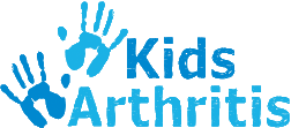
What is Juvenile Arthritis?
1 in 1000 Children in Australia live with Juvenile Arthritis.
The most widely used term to describe this hidden disease is Juvenile Idiopathic Arthritis or JIA.
The general symptoms of Juvenile Arthritis include swelling, tenderness, pain and stiffness in the joint, which
continues for over 6 weeks. This is divided into seven separate sub types that have their own symptom
characteristics.
-Systemic Juvenile Idiopathic Arthritis
-Oligoarticular juvenile idiopathic arthritis
-Polyarticular juvenile idiopathic arthritis
-Polyarticular juvenile idiopathic arthritis
-Psoriatic juvenile idiopathic arthritis.
-Enthesitis-related juvenile idiopathic arthritis.
-Undifferentiated arthritis.
What Causes Juvenile Arthritis?
The cause of Juvenile Arthritis is not yet known. It’s like if you had ants coming into your house, you wouldn't
be able to stop them coming in until you find the source of where they’re getting in from in the first place.
This is like Juvenile Arthritis, once we can find the source we may just find the cure.
 Most cases of
Juvenile Arthritis are autoimmune disorders which means that the child’s immune system (which would normally
help fight off bad bacteria or viruses), mistakenly attacks some of the child’s healthy tissues and cells. This
results in inflammation which is marked by redness, pain, swelling and heat, which can cause joint damage.
Doctors are still unsure why this happens, however they do suspect that it’s a two step process. Firstly,
something in the genetic makeup gives the child a tendency to develop JIA, but there is also environmental
factors, such as viruses that may trigger the development of the disease. However, medical professionals are
still unsure.
Most cases of
Juvenile Arthritis are autoimmune disorders which means that the child’s immune system (which would normally
help fight off bad bacteria or viruses), mistakenly attacks some of the child’s healthy tissues and cells. This
results in inflammation which is marked by redness, pain, swelling and heat, which can cause joint damage.
Doctors are still unsure why this happens, however they do suspect that it’s a two step process. Firstly,
something in the genetic makeup gives the child a tendency to develop JIA, but there is also environmental
factors, such as viruses that may trigger the development of the disease. However, medical professionals are
still unsure.
Not all Juvenile Arthritis cases are autoimmune, but according to recent research, some children (like those
with Systemic Arthritis) have what’s more accurately known as an auto inflammatory condition. Although the term
sounds similar to the one mentioned above, they’re both quite different.
When a child’s immune system is in proper condition, foreign bacteria and viruses provoke the body to make
proteins that we call antibodies. These attach themselves to the invaders so that they can be recognised and
destroyed. In an autoimmune reaction, the antibodies attach to the child’s healthy tissue by mistake, which then
signals their bodies to attack them. Due to them targeting themselves they are called antibodies.
Just like autoimmune disorders, these auto inflammatory conditions also cause inflammation, and involve an
overactive immune system. This auto inflammation isn’t caused by autoantibodies, instead involves a more
primitive part of the immune system, that, in healthy children, causes white blood cells to destroy any harmful
substances. When this bodily system goes awry it causes inflammation and can also cause fever and rashes.
Kids Arthritis Australia
@Kids_Arthritis
Kids Arthritis Australia
Sponsors
PenPal Program
Contact Us